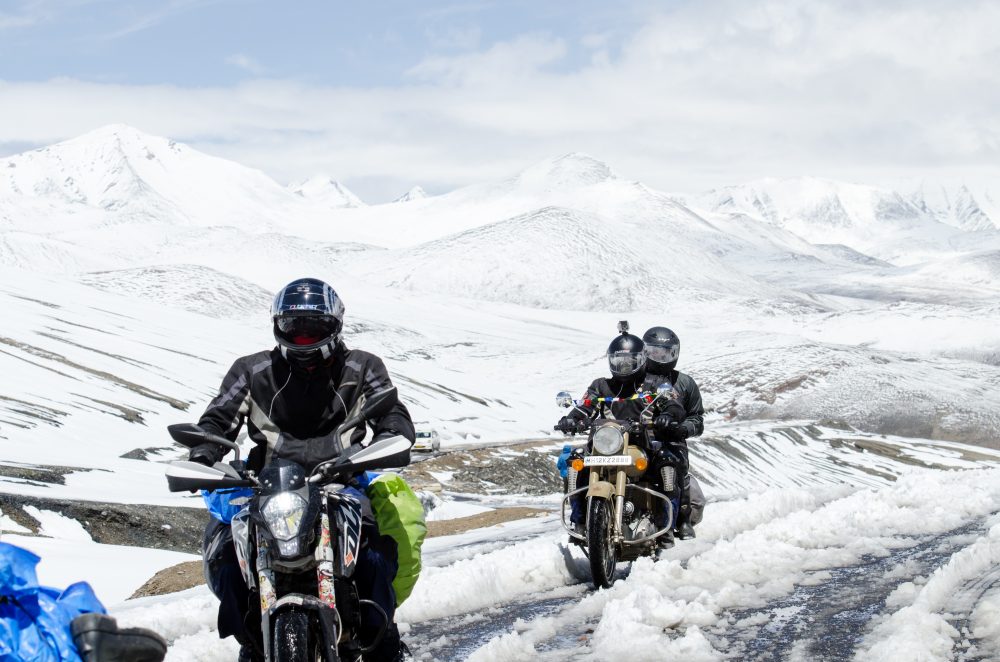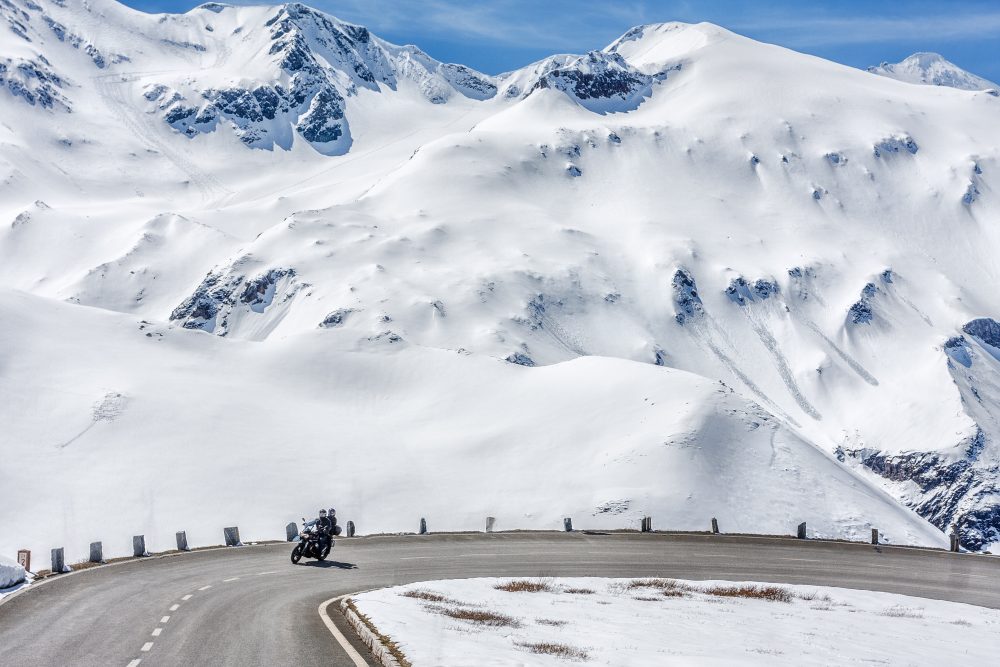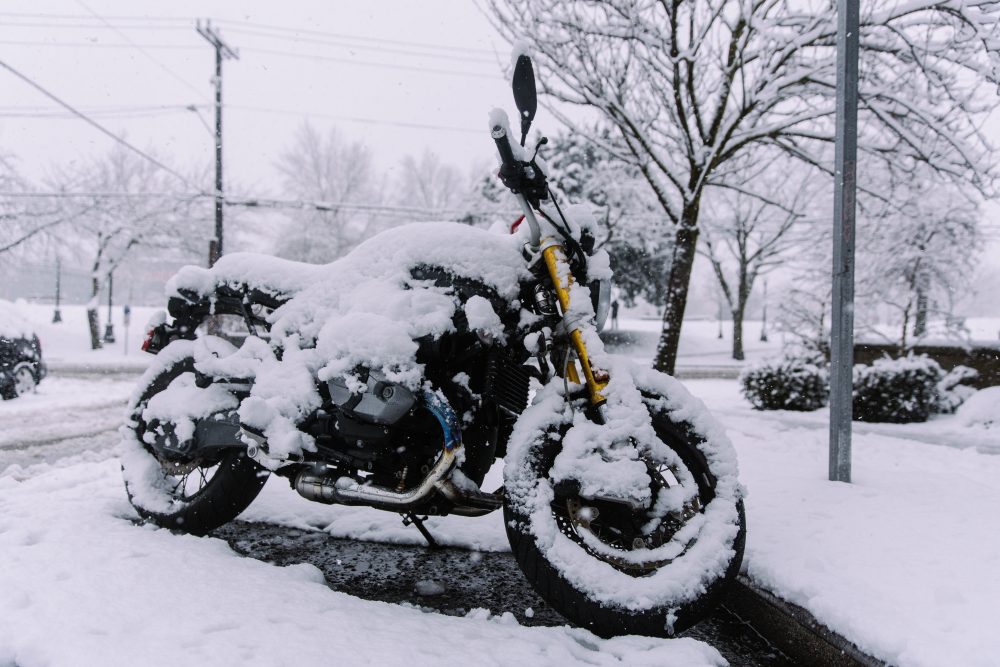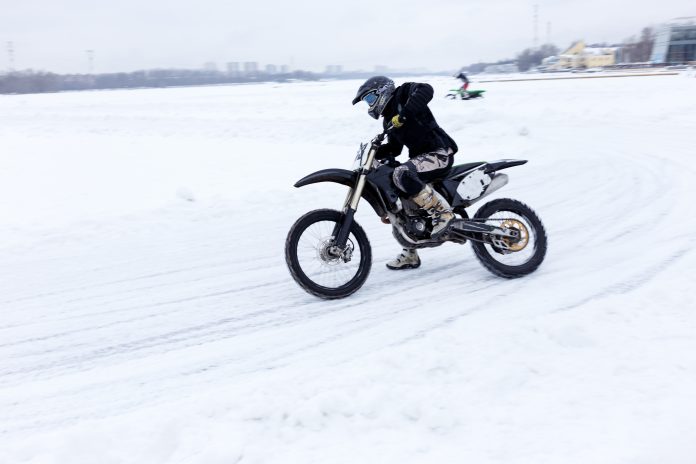Isn’t it a pain to think about your bike sitting in the garage until the trees have leaves again? For many people, riding is an all-year hobby that never stops. Most people may think that you shouldn’t ride in the winter. However, for those who genuinely enjoy riding, it’s simply not an option.
So, if you’ve decided to go riding in Winter, you should understand how winter riding differs from other seasons. This includes all the steps you’ll need to take to do to stay safe.

What’s Different About Riding a Motorcycle in Winter compared to summer?
Other than the fact that it’s colder (which it is, of course), there are a number of ways that riding in the winter differs from other seasons. There are numerous factors to consider when deciding how to ride and dress.
Cold air, snow, ice, sleet, and other winter weather conditions will have a significant influence on the performance of both your bike and your body. It’s incredibly important to be aware of how winter can affect both and to be well prepared.
so you’re probably thinking, what kind of issues may I encounter when riding my motorcycle in winter?

Wind chill
It’s really, really cold when you’re riding fast in the winter. The fierce wind and the lack of full-body movement to warm you up to make a wintertime riding chill you to the bone more quickly than you would believe possible.
Decreased tyre grip
Your tires’ rubber will shrink as a result of the heat, reducing their grip on the road. Now that’s not to say that your tyres won’t warm up while you ride, but this is not a reliable indicator (especially if they cool down quickly when you stop). If your tires don’t have enough tread, you’ll have even less traction. Lack of traction also implies longer stopping distances for both yourself and other cars on the road. In the worst-case scenario, you may lose grip altogether on the road
Decreased visibility
Not only does snow and ice can make traction even worse, it also reduces visibility. Even if you aren’t anticipating riding in these conditions, we all know they may appear when least expected.
Slower reaction times
As your body rushes to save energy for vital organs, you’ll lose dexterity in your fingers and toes. That implies reduced mobility when braking and accelerating, as well as slower reaction times when you need your reflexes to be at their peak.
So what does this mean for your body?
These factors have been shown to work together, resulting in the following picture: The winter is more difficult to manage on a motorbike, and your body is less capable of dealing with the circumstances. The answer to these issues is a combination of gearing up and changing your riding and attitude to the weather.
Why not watch my winter biking trip in Wales part 1
Winter Riding: What to Wear?
When it comes to your winter riding, the most important aspect is motorbike gear that is insulated. The more insulation you can have on your body, the better protected you will be from the cold.
Breathable clothing
If you ride in the winter, your goal is to have clothing that fits but isn’t too tight. You’ll need some breathing room and layering potential as well as clothes that are breathable.
layering
When it comes to layering, the single simplest and most effective approach to keep warm while riding in the winter is by wearing a moisture-wicking base layer, then your major insulator layer in the middle, followed by a waterproof outer shell layer (preferably also insulated).

Waterproof
I can not stress enough the importance of having waterproof clothing in the winter. You may not intend to ride in the snow or rain, but you might be forced to do so against your will, and you don’t want to be stuck with a cold, wet body in that case. Look for gear that is waterproof or at least water-resistant whenever possible.
Neck Warmers
Remember to grab a neck warmer, too, because the gap between your jacket and helmet is one of the easiest places for the cold to sneak its insidious little fingers in.
It should go without saying that function should take precedence over appearance when selecting equipment. But it’s especially crucial in the winter when a lot of the gear appears big and clumpy. However, this is absolutely necessary for protecting yourself against the elements.
Why not watch my winter biking trip in Wales part 2
Winter riding gear for motorbikes
When it comes to motorbikes in the winter, there’s more to it than simply taking your machine and heading off. Here are a few additional goods to pack in your winter bag that range from handy to absolutely essential:
Hand Warmers
For winter riding, keep your hands toasty with these tiny and inexpensive packets. It’s as simple as putting a warmer packet in your gloves before you leave, and most have enough heating power for many hours of cycling.
Heated motorcycle gloves
If you really want to take care of your hands against the elements, there are heated motorcycle gloves that can be wired up to your motorcycle battery or even connect to a battery pack. I personally recommend Gerbling gloves, you can find out more about them by clicking here.

Heated Handlebars
If you’re going to be riding for lengthy periods in the cold, these will keep you warm on a level that normal apparel and hand warmers can’t. They’re unexpectedly low-cost and simple to set up, and they may make all the difference when it comes to staying comfortable for the long run.
A heated motorcycle jacket
Heated motorcycle jackets can make your travel much more pleasant and safer. You’ll be able to focus on the road far better if you’re not shivering or concerned about becoming colder. I personally recommend Gerbling heated jackets you can find out more about them by clicking here. It’s the same jacket that I use on my winter trips in Wales.
Snacks and Water:
In the winter, when your body is working to keep itself warm, it burns more calories just trying to stay warm. However, it’s also worth noting that you’re also prone to dehydration. Carry some simple, healthy snacks like beef jerky or nuts as well as a reusable water bottle to keep yourself feeling great and sharp while riding.



